#mfz records
Text
1 note
·
View note
Text
Sebastian Melmoth: Imaginary Futures
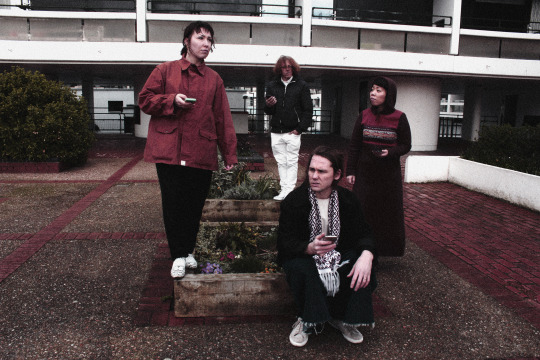
Sebastian Melmoth l-r: Laura Michelle Smith, Peter Jordan, Ilia Rogatchevski, Tomoko Matsumoto. Photo: Artem Barkhin.
Sebastian Melmoth has seen various stages of activity since I established the project back in 2006. Intended to operate as a conceptual antithesis to popular music, to begin with, the group existed in name only. At the time, I was mildly obsessed with the life and work of Oscar Wilde and, upon discovering that Wilde took up the pseudonym of Sebastian Melmoth during his self-imposed exile in France (1897-1900), decided to call my imaginary band in his honour.
The name is referential. It is a combination of Saint Sebastian and Melmoth the Wanderer. The former was an icon for the underground gay community in Victorian England and the latter, a Gothic novel by Wilde’s great-uncle Charles Robert Maturin, first published in 1820. Due to his own castigation by polite society, it is likely that Wilde greatly empathised with both Saint Sebastian’s martyrdom and Maturin’s central antagonist (a man who takes to wandering the Earth after selling his soul to the Devil in return for immortality).
The literary nature of Sebastian Melmoth was the project’s founding principle. The first few years were littered with attempts at writing sincere songs that pointed towards literary hallmarks. Sunshine Blues, for example, namedrops Rodion Raskolnikov, the anguished protagonist of Fyodor Dostoevsky’s Crime & Punishment (1866), while Manskinner references a peripheral character from Haruki Murakami’s The Wind-up Bird Chronicle (1994).
This way of working was typical for us. Books were read in parallel to the creation of the music, lyrics and visual artwork. Each activity informed the other, creating a fluid symbiotic network of overlapping information. Like is often said of Sonic Youth, I wanted Sebastian Melmoth to operate as an obscure gateway drug to other works of literature, pop culture and art with each release having a tight conceptual idea supporting it.
Sebastian Melmoth began life in earnest as a high school four-piece, with myself on rhythm guitar and vocals, Miranda Collett on lead guitar, Joe Dibb on keys and Elias Razak on drums. Peter Jacobs replaced Elias after a while, but before long the group downsized to an acoustic anti-folk duo in the vein of the Moldy Peaches. The underlying theme of our debut album, Insanity’s Insanity (self-released, 2010), was the absurd nature of everyday reality. This is evidenced by the title, which was lifted out of Eugène Ionesco’s 1959 play Rhinoceros.
While looking for a job on Gumtree, I came across a psychedelic indie outfit called Clinker (at that time a quartet, but now a duo consisting of Peter Jordan and Tomoko Matsumoto). They were advertising for extras to cast in their new music video So We Say (Dir. Ambrose Yalley, 2009). We became friends and eventually started making music together. They produced Insanity’s Insanity and even remixed a few of the tracks from that album, but our collaboration didn’t realise its full potential until a little later.
youtube
Sebastian Melmoth - Sunshine Blues (DTT Mix)
Our next releases, In der Tiefe (self-released, 2011) and The Nausea of Being (self-released, 2012), were at the same time more ambitious and conceptual than our first long player. Pointing their fingers at the works of Carl Jung and Jean-Paul Sartre respectively, these companion albums broadly concerned themselves with existentialism. In der Tiefe (German, in the depths) took drug psychosis as its principal theme. Not unlike Gaspar Noé’s Enter the Void (2009) the central protagonist uses psychedelic drugs to delve deep into the rabbit hole of his psyche in an attempt to capture and control his ‘shadow self’. The German title was appropriated from Fritz Lang’s silent sci-fi classic Metropolis (1927) and, in its original context, referred to the bottom level of the titular tiered city: the domicile of the working classes.
The Nausea of Being expanded on these ideas, rising, as it were, from the depths and surfacing on a desolate landscape of social destitution, political corruption, alcoholism, murder and religious dogma. Sartre, Albert Camus and Samuel Beckett all greatly influenced me around this time. I remember reading Sarte’s 1938 novel Nausea, where the narrator experienced crippling anxiety in the face of everyday interactions, and thinking that his experiences were not far from my own. Tracks such as Waiting for Godot, Paintstripper Blues and Godemiché echoed the work of the authors above and attempted to illustrate what I saw, at the time, as the core elements of the human condition: alienation, despair, lust, self-destruction.
Peter programmed the drums, played bass and, along with Tomoko, pretty much moulded our sound on these two albums, but the next couple of years saw a period of transition, both in terms of lineup and musical direction. Laura Michelle Smith joined us on drums, adding much needed rhythmic power to the live band dynamic, while Miranda left a short time after that to pursue other interests. Her parting contributions can be heard on Emetophobia (self-released, 2013). This eight-track EP was recorded entirely on GarageBand using drum presets and the inbuilt laptop mic for live instrumentation. Stylistically drawing from Atlas Sound’s Bedroom Databank series and the Brian Jonestown Massacre’s more lo-fi output, Emetophobia is still one of my favourite Sebastian Melmoth albums. The lyrics may be a touch naive and the sound imperfect, but these elements contribute to the album’s overall charm.
Being now in the business of making difficult music we found a couple of labels sympathetic to our way of thinking. After listening to an unsolicited copy of The Nausea of Being, Thomas Martin Ekelund commissioned us to compose thirty minutes of new music for his tape label. The result was In Ruins (Beläten, 2014), which is probably our best and most consistent work. It was described in one review as sounding “like a Britpop version of the Velvet Underground filtered through everything rock saw during the 70s, 80s and 90s”.
youtube
Sebastian Melmoth - Miet Mitzvah
While on the surface In Ruins may appear to be a breakup album, at its core, it is actually a complex study of fanaticism, personality cults and terrorism. Vincent Bugliosi and Curt Gentry’s account of the Manson Family murders, Helter Skelter (1974), and Stefan Aust’s The Baader-Meinhof Complex (1985) both fed into the album’s sense of isolation. The latter book, which recounted the history of the Red Army Faction - a far-left West German militant organisation - was particularly influential.
After becoming increasingly fascinated with their story, I rechristened each of us after the main Baader-Meinhof members: Andreas Baader, Ulrike Meinhof, Gudrun Ensslin & Jan-Carl Raspe. At concerts we wore all black, save for a red armband adorned with an inverted white triangle, and performed theatrical psychedelic noise rock to the general bewilderment of all. While playing Wrong Side of the Sun, for example, I would typically invade the crowd and strangle myself with the microphone cable. This performance had roots in Viennese Actionism, but also functioned as an extension of Guy Debord’s push for the Construction of Situations. What we were trying to say was that all forms of fanaticism are dangerous, irrespective of their ideological origins, but I’m not certain whether this came across particularly well.
By this time we were regularly rehearsing in a garage underneath the A104 in east London. It was a cold, dark and unforgiving place. Apparently, the space had been an illicit marijuana farm before it became a rehearsal room. With notable latency, this knowledge trickled down to the local gangsters and the garage was broken into on a few occasions. Finding nothing but piles of cheap guitars, broken amplifiers and no marijuana our new friends left the place alone, but not before holding our besieged landlord up at knifepoint. Tensions in the band were also on the rise. Laura and myself were becoming more interested in musique concrète, graphic scores and improvisation, while Peter didn’t like this new direction at all, feeling that our strengths lay in songwriting and the traditional band dynamic.
It was against this background that our last two full length albums were recorded: Felix Culpa (OKVLT, 2015) and Kupa Piti Kungka Tjuta (Must Die Records, 2016). We worked on these projects in parallel in an attempt to appease our diverging interests.
Kupa Piti Kungka Tjuta is a garage rock record that nodded to our punk rock influences while also including elements of surf, psych and noise. The record title is a reference to a council of Senior Aboriginal Women from the town of Coober Pedy, South Australia who protested against the Australian government dumping radioactive waste on their land. Coober Pedy, which translates from the local Aboriginal language as “white man’s hole”, is not only famous for its opal, but also the fact that many of its residents live underground to escape the scorching daytime heat. Having spent our fair share of time writing music underground, we felt companionship with these people. Peter wanted an accurate reflection of the band as a live unit and, I suppose, the album manages to achieve that (some of the drum tracks were actually multitrack recordings from our concerts). The production is far from perfect, but the energy is there, which, in the context of a garage rock album, is probably more important than fidelity.
youtube
Sebastian Melmoth - Rooftop Surfing
Felix Culpa (Latin, happy fall) took on a slightly different approach. The majority of these songs were created during intense and heated sessions. Improvisation played a key role in its construction, but so did William Burroughs style cut-ups, digital manipulations and field recordings. At its heart, Felix Culpa explored the nature of the Fall: a condition of living in a permanent state of exposure; of opening oneself up to the Other. According to Slavoj Žižek, "the ultimate Event is the Fall itself, the loss of some primordial unity and harmony which never existed, which is just a retroactive illusion" (Event, 2014). Just like Kupa Piti Kungka Tjuta, this project also served to reflect what the band was at that particular moment in time: fractured, vulnerable and on the brink of disbanding. The album cover shows Gerhard Halbritter’s photograph of Andreas Baader’s death mask, which hints to the viewer that the creative drive behind Sebastian Melmoth had largely ceased to operate.
Each of our studio releases aimed to depart from the last. Not repeating ourselves was another key principle of the band. Towards the end, however, I began to feel that we were doing just that. I also felt that my songwriting had become contrived and breaking out of that mould was not an option supported by everyone. Additionally, I became uncomfortable with some of the characters in my lyrics. Songs such as Prosopagnosia or Foedi Oculi employ elements of sexism, sadism, oppression and violence in order to highlight the abhorrence of such actions. Even though I saw the explorations of these themes as a contemporary take on Maturin’s gothic horror, as time went on, it became increasingly difficult for me to justify them.
Our last show was at a tiny Clapton bar called Biddle Bros, in the summer of 2017. In my opinion, the show went better than expected. At that point we hadn’t rehearsed much or played live in a while. Peter disagreed. He felt that we lost something crucial along the way. Where once we had been theatrical, now we were just plodding along. I wasn’t convinced. Theatre is an open-ended format that can allow for modest gestures as well as flamboyant ones. We were coming from different directions and refusing to meet each other halfway. Peter was citing David Bowie and I was referencing Fluxus and Bertolt Brecht. At its core, this argument - not our first or last, but certainly our most public one - was saturated by our personal and professional expectations of one another. These expectations weren’t always met and neither of us were open to what the other person wanted. Whatever odd bits we had recorded around this time were self-released as an outtakes compilation called Devotional Songs for the Digital Age, in late 2018.
Not long after all of this, Olf van Elden aka Interstellar Funk reached out with a proposal to compile our more electronic cuts together on vinyl. We christened this new album The Dynamics of Vanity (Artificial Dance, 2019). The title is both a comment on culture's obsession with rehashing the past - the subject matter of Simon Reynolds's book Retromania (2010) - and our own personal navel-gazing. The title references a collage I had made as an art student that mocked the fashion industry's depiction of male underwear models. To my mind, they resembled intricate amphorae paintings and Hellenistic bronzes of Greek antiquity.
youtube
Sebastian Melmoth - Icarus
Although The Dynamics of Vanity is not a studio album, we approached its production with the same attention to detail as we would any other record. For the cover, we wanted to get across the stark, archaic beauty of the human body in motion. Stripped, Rammstein’s appropriation of Leni Riefenstahl’s Olympia (1938) was the main reference point, but so too were Andy Stott’s album covers, namely Luxury Problems and Too Many Voices. After some initial back and forth, the Amsterdam-based Australian designer Steele Bonus rendered these ideas in a post-punk fashion suited to our sound and aesthetic.
As we dug through our hard drives compiling the album, we unearthed a few unreleased remixes made by Peter and Tomoko. We decided to weave these rediscovered tracks into a new project, Imaginary Futures (MFZ Records, 2020), a record that reimagined our back catalogue as a suite of rave-ready dancefloor fillers.
While the album title, which alludes to the lost potential of disparate creative outcomes, was borrowed from Richard Barbrook’s 2007 book charting the emergence of the internet, it was the production, remix and DJ work of Andrew Weatherall that was the key inspiration for the our approach. The album’s flow and concept loosely mirrors Weatherall’s treatment of Primal Scream’s source material for Screamadelica, which itself resulted in their pivotal marriage of rock and acid house. The idea for the album was set before Weatherall’s passing, but his departure helped to calcify the direction of the mix.
Musically, our last two albums are pretty cohesive, despite the fact that they are both compilations and the material on them isn’t strictly new. They are collections of snapshots, taken over our decade-long recording history, that are bridged together by new contexts. The Dynamics of Vanity was curated by Olf and the bulk of Imaginary Futures was remixed by Peter and Tomoko, and my personal contributions to these projects was limited to administrative tasks, design and artwork consultation. That being said, they are fair representations of who we were: not ‘Best Ofs’ or ‘Worst Ofs’, but ‘Sort Ofs’.
youtube
Sebastian Melmoth - Accidentally Grotesque (DTT Mix)
Much like the albums described above, this essay is merely a rendering of our story and far from the whole picture. The text is not intended to be canonical. Many events, people and releases have been omitted for the benefit of readability. What I hope the text does is provide some background of our origins, processes and motivations.
As mentioned before, we haven’t played live or recorded anything new since 2017 and I doubt that we will do either of those things again. After fourteen years of nurturing the same idea, it has come to a point where I have said everything there is to say in this particular format. I have enjoyed developing this band with my many friends, and seeing it change over the years, but it’s finally time for us all to move on to other projects and for Sebastian Melmoth to cease his aimless wandering.
The Dynamics of Vanity is out now on Artificial Dance. Imaginary Futures is available via MFZ Records. Follow Sebastian Melmoth on Facebook and Instagram.
Ilia Rogatchevski
#sebastian melmoth#artificial dance#mfz records#artem barkhin#imaginary futures#The Dynamics of Vanity#new wave#post punk#experimental
0 notes
Photo

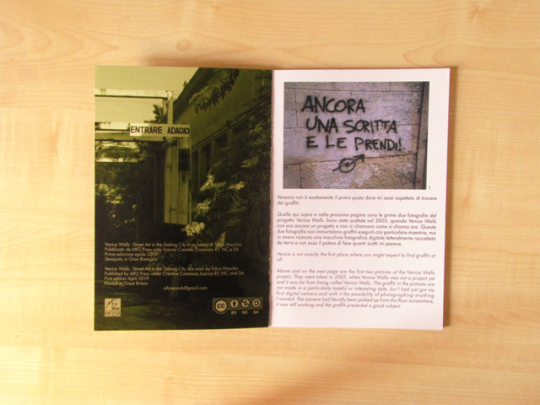
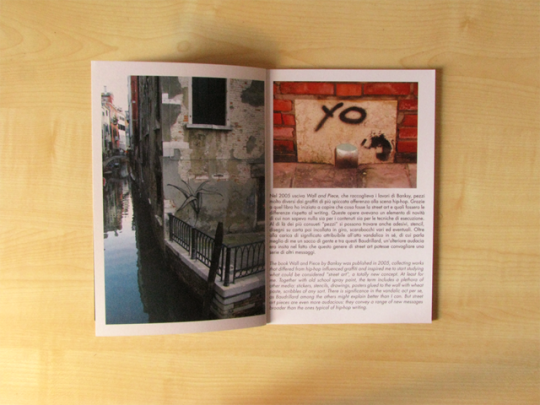
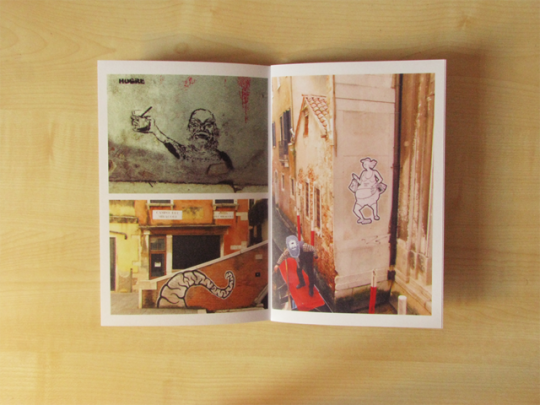

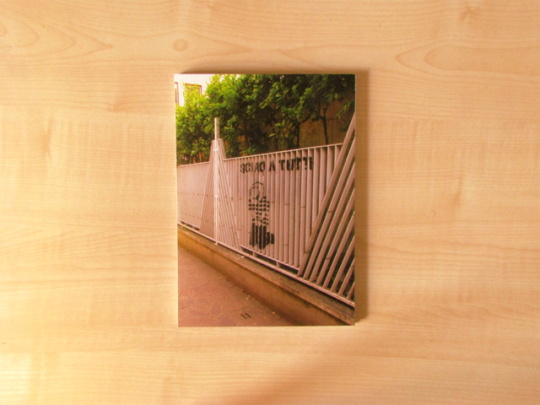
VENICE WALLS IS NOW ON PAPER (TOO)
The cat is out of the bag!
I am proud to announce that the first issue of the Venice Walls zine is out, published by MFZ Records.
To get your copy message me me or follow this link!
#venezia#venice#streetart#street art#zine#photozine#photo zine#fanzine#sinking city#sinkingcity#small press#mfzrecords#mfz#records#mfzpress#press#venicewalls#thegreatslug#tobia maschio#tobia
19 notes
·
View notes
Photo


Graphic and packaging design for I Wanna Hear the Music EP by Breakmaster Cylinder
MFZ Records 2017
Photo courtesy: Marina Benetti
0 notes
Photo
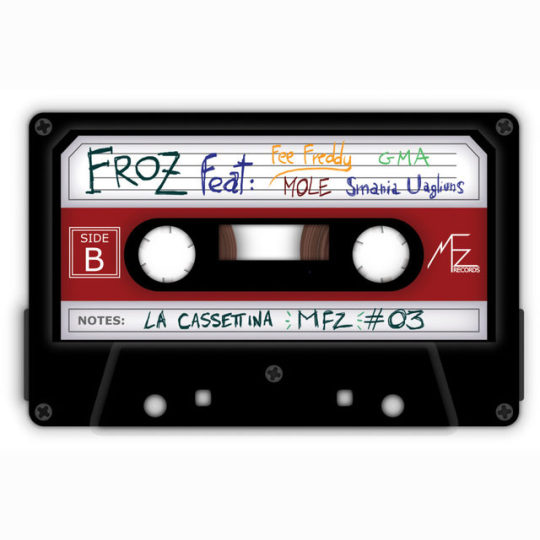
Ascolta La Cassettina di Froz
http://bit.ly/2mZlMF2
0 notes
Link
Last Ultrasons (#21) radioshow of the year, aired yesterday on LYL Radio.
Visual credits: photography by Tina Modotti, Telegraph Wires (c. 1925)
Tracklist:
- Alain Pierre - Ô Sidarta (Finders Keepers)
- Mark Fell - Manitutshu 1.3 Razorwire Dub (Wire magazine - Below The Radar Vol 6 - 2011)
- Phew - Cheers (label Disciples).
- martiensgohome - Des flammes ailées au sein du vide
- Shida Shahabi - Prolog (Fatcat Records / 130701)
- BLU RITUAL - Closing Ritual (Outro) (MFZ Records)
- Adhelm - Arcs (Glitterbeat / tak:til)
- Hiele, « Society » (Ultra Eczema)
- Throbbing Gristle - Catholic Sex
- This Heat, Mario Diekuuroh - This Heat Meets Mario Diekuuroh at Cold Storage
- Elliot Bergman - On The Table (Leaving Records)
- Pauchi Sasaki - Mañana Todavía (Wire magazine / Below The Radar 35)
- Viatorism - Alter - 2.3 (Mille Plateaux)
0 notes
Photo
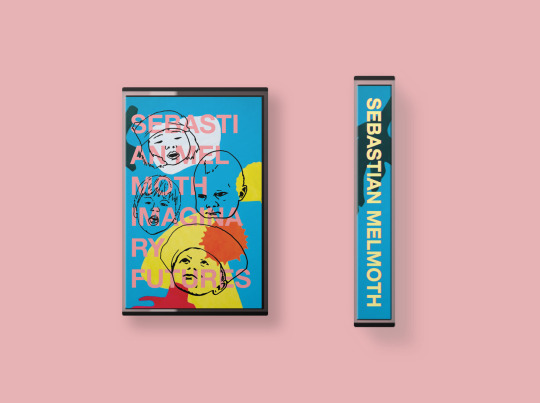
We are pleased to announce an album that reimagines our back catalogue as a suite of rave-ready remixes. Imaginary Futures is out now on MFZ Records. You can order your copy here.
#sebastianmelmoth#imaginaryfutures#mfzrecords#remixes#psychedelic house#indie disco#krautrock#electronica
0 notes
Photo

(Evento riservato soci AICS Emilia Romagna 2018/19 con ingresso a contributo libero destinato agli artisti)
23 August 2019, 19:00 @ Ikigai Room, Bologna, via Nosadella 15 A
DESCRIPTION
MFZ Records will bring two artists from their roster to Ikigai Room for an impro session that draws inspiration from their MFZ releases and long-time friendship. Join us for a night of acid, ambient and raw dance music that will make your brains and bodies move.
FROZ
Froz is the club-oriented moniker of London-based DJ, Music Producer, Sound Artist and Musicologist Francesco Fusaro / Froz. He was part of Blog-House production team "3 Is A Crowd" and released music on major and independent labels in the US, UK, Germany, Switzerland and Italy.
He has also taken part in a few art projects: here.now.where? (Marrakech Biennale 5), Telephone (Satellite Collective, New York), Sound Scapes and Sound Identities (Rovereto), La pancia è buia (Milan).
He co-founded MFZ Records and 19'40" in 2016 and has been running a classical and contemporary music show on NTS Radio since 2017.
Acid Youth
Acid Youth is a project started in 2016 by Davide Nicosia, an electronic music producer based in Bologna. He was previously known as D.Glaser, and he was the co-founder of Hello S(h)itty Records, a web-label active in the Blog-House era.
Initially starting with a Roland MC-303, Davide has collected over time a bunch of #analog machines, and other quirky sounding musical instruments. Under the influence of Chicago House, krautrock and #EBM, Acid Youth is a blend of troubled basslines, modular freakness, frozen pads, analogic distortions and overdriven drumm achines.
In 2016, Acid Youth released "Black Haze", a 3 tracks EP in cassette format on MFZ Records. Two new tracks, “OkOkOk” and “Double Green”, came out at the end of 2017, and are part of an EP series which will be released in 2018 and '19.
#francesco fusaro#live music#spettro records#froz#acid youth#bologna#2019#23 agosto#electro#electronic music#concerti#ikigai#ikigai room bologna#improv#dance#ebm
0 notes
Text
Mind of a Mizfit
// <![CDATA[ (function(d, s, id) { var js, fjs = d.getElementsByTagName(s)[0]; if (d.getElementById(id)) {return;} js = d.createElement(s); js.id = id; js.src = "//connect.facebook.net/en_US/all.js#xfbml=1"; fjs.parentNode.insertBefore(js, fjs); }(document, 'script', 'facebook-jssdk')); // ]]>
Featured artist: Pat Swayzee MFZ - Mind of a Mizfit
As part of our ongoing "Rap's New Generation" series, today we sat down with the upcoming underground artist Pat Swayzee MFZ from Sumter, SC to talk about his recent music, his upcoming projects, his career advice and his overall experiences being in the music industry and he did not disappoint...
Thanks for taking the time to talk with us, Pat Swayzee MFZ! Let's go back to the beginning of your career. How did you decide to become an artist?
Pat Swayzee MFZ: I've always had a passion for music. Most children growing up wanted to be doctors, lawyers, athletes, etc. I knew since the age of nine years old that I wanted to be a rapper. My favorite rapper as a kid was Master P. He made me want to be a rapper more than any other artist at the time. I started taking rap serious in 2009 and started dropping mixtapes.
Keep grinding and keep working. You never know who's watching.
- Pat Swayzee MFZ
What about concerts? Do you play live?
I have performed at some artist showcase events and currently planning an independent tour.
Best punchline you ever wrote?
Bussin down this kush pack, got the room smelling like mildew, Couple racks, im charged up, just imagine what a mil do,
- Pat Swayzee MFZ
What are you currently working on? Did you release something in the past?
I have two projects (Zombie Mode and Free Agent) currently on Spotify and Apple Music. I'm currently working on several projects to be released in 2019.
Last but not least: Would you sign a record contract with a major label?
I would sign with a Major Label if the deal is beneficial for both parties. The pros of having a contract is the exposure and marketing ideas you could gain from the label. The cons of having a contract is the fact that you're obligated to as the label directs you to, whether for your benefit or theirs.
Any last words?
S/O to my city Sumter, SC and Major S/O to the Squad "MFZ"…..We're Here!!!
Where can people follow you to stay up-to-date?
Pat Swayzee MFZ: https://www.instagram.com/4eva_swayzee/
Thank you for your time. We wish you and your career the success it deserves.
// <![CDATA[ (function(d, s, id) { var js, fjs = d.getElementsByTagName(s)[0]; if (d.getElementById(id)) {return;} js = d.createElement(s); js.id = id; js.src = "//connect.facebook.net/en_US/all.js#xfbml=1"; fjs.parentNode.insertBefore(js, fjs); }(document, 'script', 'facebook-jssdk')); // ]]>
--
Support the culture.
0 notes
Photo
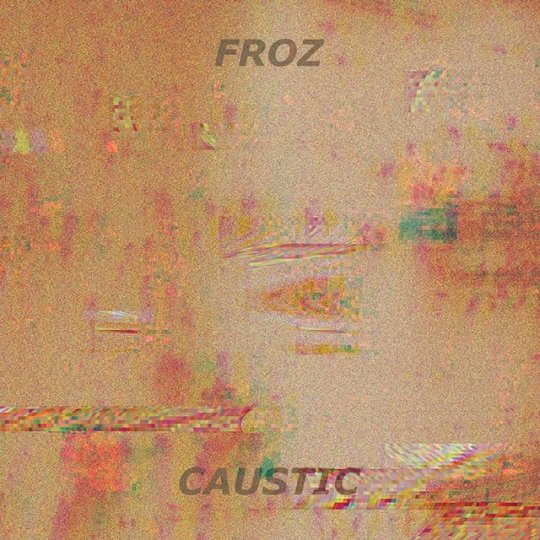

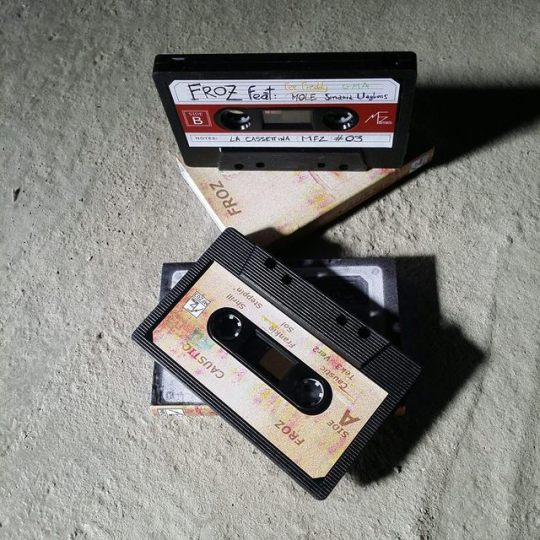
Graphic and packaging design for Caustic EP by Francesco Fusaro
MFZ Records 2017
Photo courtesy: Marina Benetti
0 notes
Photo
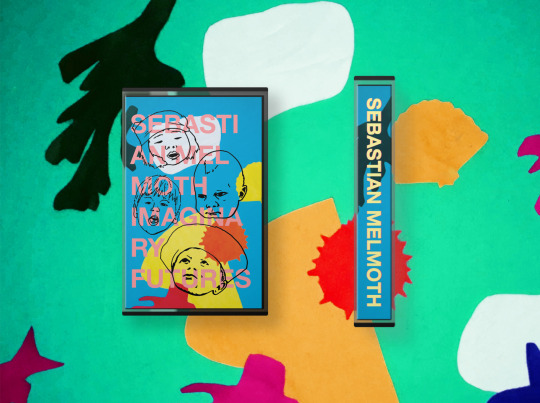
My band Sebastian Melmoth is releasing an album of remixes on 16 October via MFZ Records. There will be a limited edition run of 50 cassettes. Artwork by yours truly. You can pre-order your copy here.
#sebastianmelmoth#imaginaryfutures#mfzrecords#cassetteculture#indiedisco#remix#motorik#house#techno#mixtape
0 notes
Photo

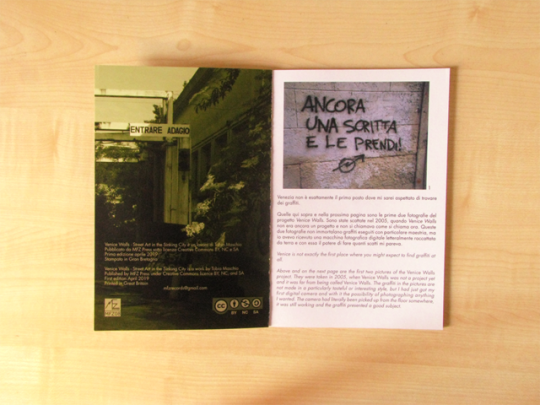
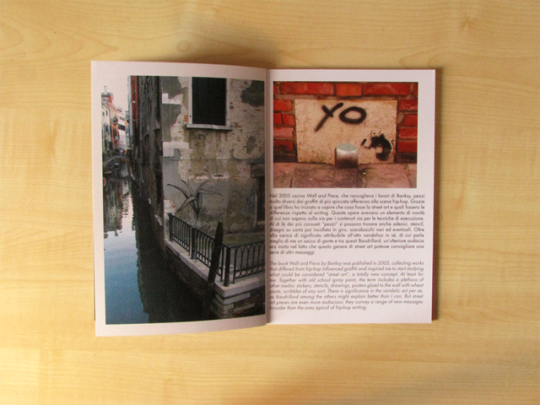
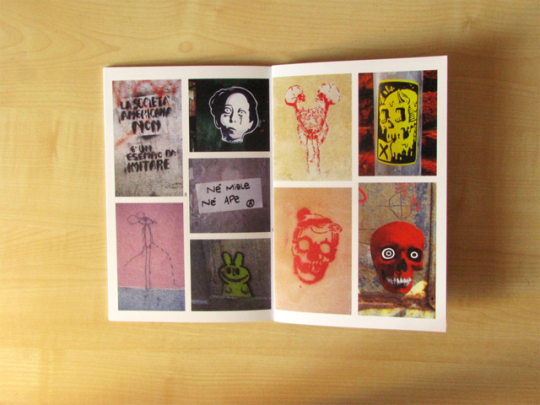
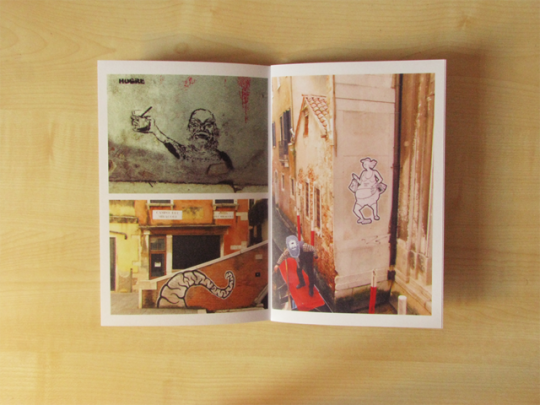

Venice Walls is an ongoing project started in 2005 aiming to collect street art pieces from Venezia, Italy. This is the printed first photo-zine featuring some of the 6500 (and counting) pictures, produced in collaboration with MFZ Records. Beside being the author of the photographs, I curated the layout and the printing process.
0 notes